1) People and Roles
Holacracy is a system of organizational governance that seeks to distribute power through a hierarchy of circles (a “holarchy”). Unlike traditional management, power is not given to people or positions, but to roles and circles.
Roles also tends to be much smaller than a traditional position. Therefore, a person who devotes a lot of time to the organization usually fills several roles, even in different circles.
A role can also be “energized” by many people if the energy required is greater than the full dedication of a single individual.
In Holacracy, the structure of circles and roles is centered on the purpose of the organization and not on the needs of individuals. People are seen as “souls” who “energize” certain roles in the system at a given moment.
2) Self-Management
Among the most controversial features of Holacracy is the fact that it says it has no managers. In reality, the functions of a traditional manager are distributed among various roles, circles, and processes. For example, the Lead Link is responsible for prioritizing the work of the circle and establishing a strategy. On the other hand, the Rep Link goal is to channel what cannot be solved in the circle to the super-circle.
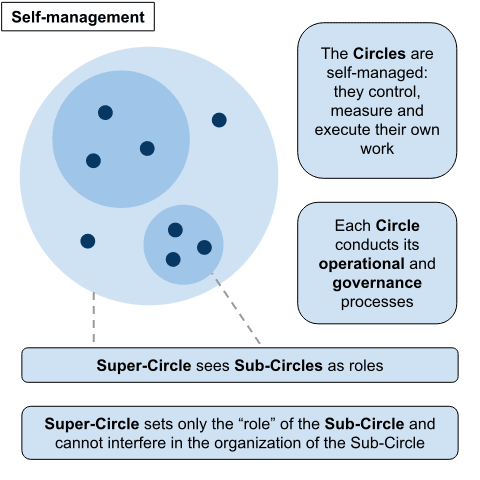 Holacracy is seen as an operating system for organizations, which establishes how to evolve and change the governance structure (which roles can do what). The model – in version 4.1 – does not specify how the organization should deal with issues such as hiring, dismissal, and compensation. However, there are several “apps” that provide solutions to these problems, such as Badge Based Compensation.
Holacracy is seen as an operating system for organizations, which establishes how to evolve and change the governance structure (which roles can do what). The model – in version 4.1 – does not specify how the organization should deal with issues such as hiring, dismissal, and compensation. However, there are several “apps” that provide solutions to these problems, such as Badge Based Compensation.
Who guarantees that work gets done?
Tactical Meetings replace the supervision of a traditional manager. They create a peer pressure environment where all members of the circle are accountable to each other about their responsibilities, projects, metrics, and recurring activities.
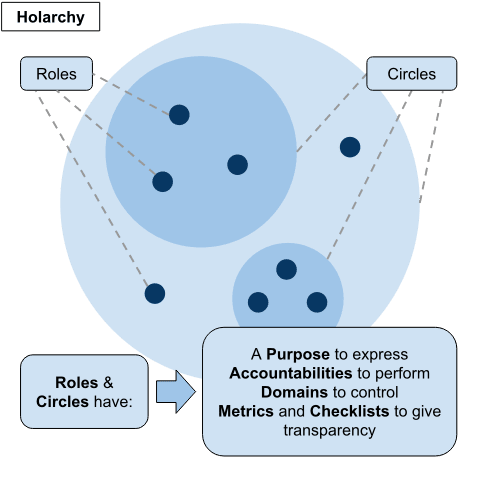 But is that enough? Yes. The peculiar format of the Tactical Meeting creates a lot of visibility about everyone’s work. It is evident when someone is not doing well. At the same time, the Facilitator protects space from each other and prevents the meeting from becoming a finger pointing.
But is that enough? Yes. The peculiar format of the Tactical Meeting creates a lot of visibility about everyone’s work. It is evident when someone is not doing well. At the same time, the Facilitator protects space from each other and prevents the meeting from becoming a finger pointing.
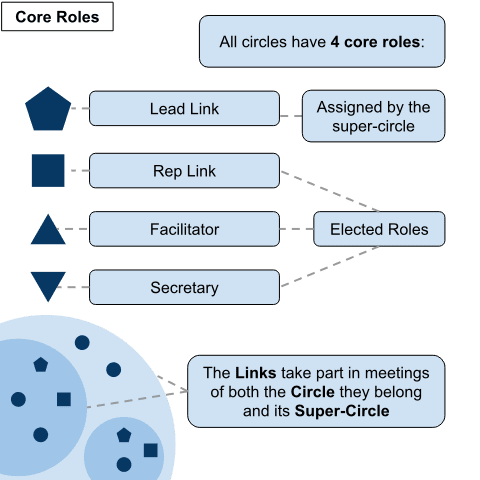 3) Core Roles
3) Core Roles
All circles include 4 roles that make up the basic structure. They are: Lead Link, Rep Link, Facilitator and Secretary.
The Lead Link, as said before, is responsible for prioritizing the work and establishing a strategy for the circle. In addition, s/he invites people from organization to fill roles in the circle. The Lead Link also carries messages from the largest circle to the smallest.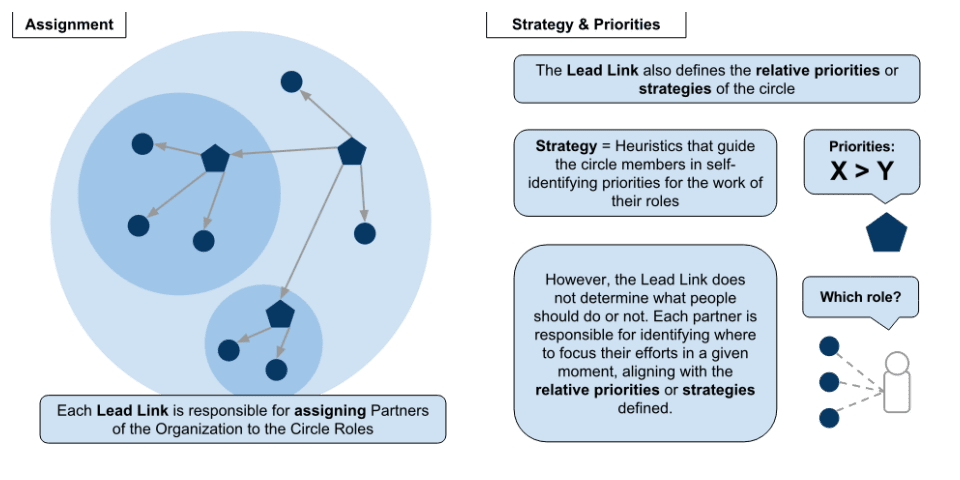 The Rep Link does the opposite. It channels messages out of the circle that cannot be processed inside it. For example, if the Marketing circle is in need of a specific Social Media circle project, the Representative Link can bring that tension into the Tactical Meeting of the super-circle, where both are represented.
The Rep Link does the opposite. It channels messages out of the circle that cannot be processed inside it. For example, if the Marketing circle is in need of a specific Social Media circle project, the Representative Link can bring that tension into the Tactical Meeting of the super-circle, where both are represented.
The Facilitator and the Secretary maintain Holacracy meetings running in each circle. The first is responsible for presiding the meetings in accordance with the Constitution. The Secretary schedules the meetings (Tactical and Governance) and records the outputs, distributing them to all members of the circle.
4) Governance – working on the organization
Holacracy takes organizational governance seriously. All recurring activities are captured in the form of roles and circles, with clear responsibilities and areas of authority. If you would like the Designer role to produce pieces for Marketing campaigns, you should take this “tension” to a Circle Governance Meeting. One of the mantras of Holacracy is:
Implicit expectations hold no weight.
It is common in traditional organizations to be surprised by people asking us about things we are supposed to do. In Holacracy, this is not a reality. Once all responsibilities are contracted, people can focus on work and make decisions without questioning who is responsible for what all the time.
Integrative Decision-Making (IDM)
The Governance Meeting is based on “tensions” – a gap between what is and what could be – and proposals brought by members of the circle. Only in this ritual can changes be made in the group’s governance (roles, responsibilities, domains, policies, etc.).
Once a participant feels a tension, he or she brings a proposal in the Governance Meeting that he or she believes resolves or reduces that tension. For example:
Tension: Today I fill the role of Marketing and I am responsible for producing campaigns. However, I do not have design skills and I cannot produce good design pieces for these campaigns. A better reality would be if some other role could produce these pieces.
Proposal: I propose adding the accountability of “Producing parts for Marketing campaigns upon request” to the Designer role of the circle.
The Integrated Decision-Making process is then used by the Facilitator to “process” this tension in the Governance Meeting. The proposal will be approved if no objection is raised by the other members of the circle. But heads up! An objection is not a concern, nor a better idea. In Holacracy, an objection is a harm that the proposal can cause and that moves the circle backwards. If objections are raised, they will be integrated into the proposal in order to satisfy the original tension and not cause the objection.
All circles conduct their governance process. Larger circles rely on the participation and representation of the Circles’ Links.
5) Operations – working in the organization
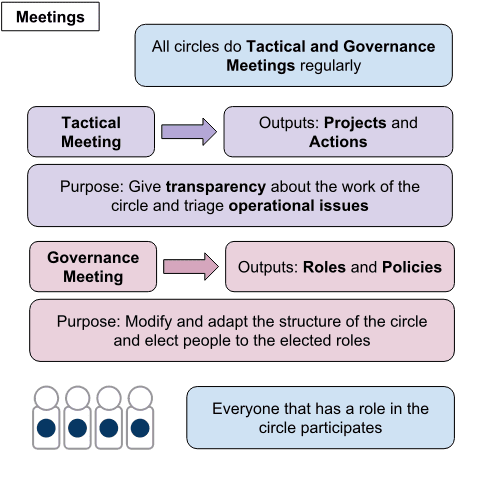 Governance operates based on the Integral Decision-Making Process. But this is not the case with day-to-day operational decisions. They are, for the most part, taken in an autocratic and independent way by people who fill the roles.
Governance operates based on the Integral Decision-Making Process. But this is not the case with day-to-day operational decisions. They are, for the most part, taken in an autocratic and independent way by people who fill the roles.
If you fill the role of Designer, you can act freely by designing the pieces of the Marketing Campaign in the way you believe best serves the purpose of your circle and the organization without asking anyone’s permission. In Holacracy, approval schemes – very common in hierarchical organizations – are only used when really necessary.
With these principles crystallized, the decision-making speed of a Holacracy powered organization is often much higher than a conventional one.
6) Constitution and Ratifiers
Imagine you are playing football with your friends. Suddenly, one of the players – the one who owns the ball – gets annoyed at the outcome of the game and decides that he can play with his hands whenever he wants. It doesn’t make any sense, right? That’s how many founders, managers, leaders, and other power figures do within an organization.
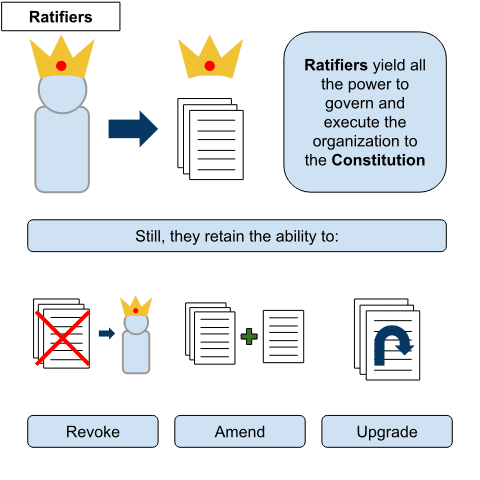 All the rules of Holacracy are described in a Constitution. There is the game that everyone agrees to play. The owner of the ball – the CEO, the founder, the board – signs the Constitution of Holacracy stating that he/she/them will hand over their autocratic powers to the Constitution. From then on, the rules apply to everyone. As they actually own the ball (the company), they can also cancel everything and return home. But if they decide to play, they have to play with the same rules as everyone else.
All the rules of Holacracy are described in a Constitution. There is the game that everyone agrees to play. The owner of the ball – the CEO, the founder, the board – signs the Constitution of Holacracy stating that he/she/them will hand over their autocratic powers to the Constitution. From then on, the rules apply to everyone. As they actually own the ball (the company), they can also cancel everything and return home. But if they decide to play, they have to play with the same rules as everyone else.
The signing of the Constitution symbolizes a commitment of those responsible for the organization with Holacracy.
If you have more questions, feel free to submit them in the comments below. And do not forget to share if you like! :)



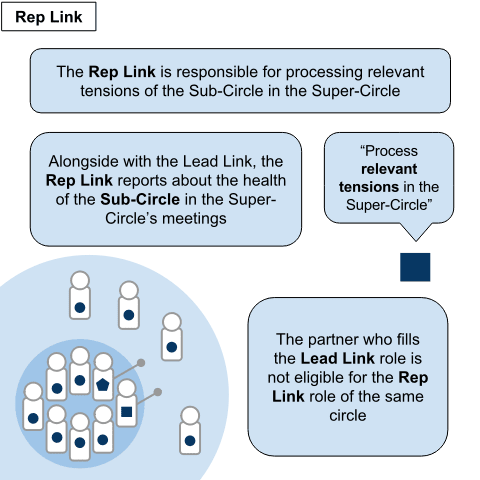
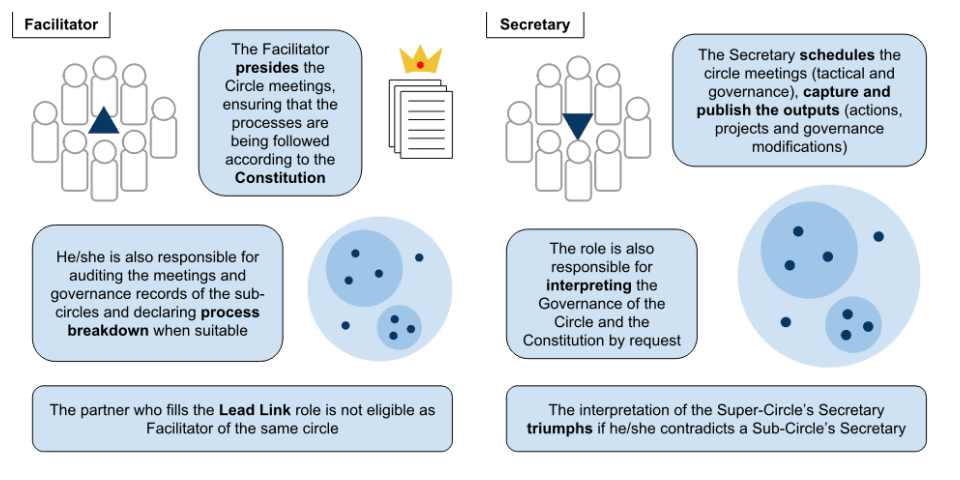
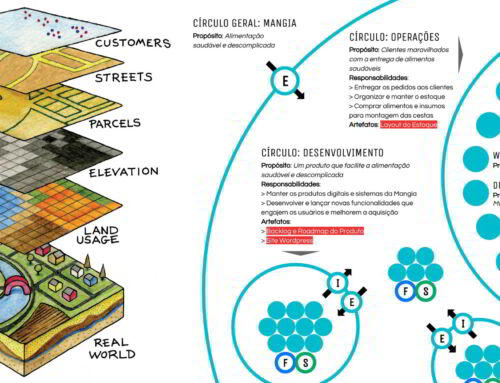


[…] principles are the basis of frameworks such as Holacracy. They are made concrete through a meta-process (a set of rules) that allow the creation of a new […]
[…] A great lever available is the adoption of a highly flexible organizational structure such as Holacracy. In addition to dissolving the concept of departments, it distributes authority explicitly, which […]
[…] A great lever available is the adoption of a highly flexible organizational structure such as Holacracy. In addition to dissolving the concept of departments, it distributes authority explicitly, which […]
[…] principles are the basis of frameworks such as Holacracy. They are made concrete through a meta-process (a set of rules) that allow the creation of a new […]
[…] of members like Terence our network of Cowboys fans continues to grow. Incase you wondering what a “holacracy” is check out this content below I created to help us understand. My theory is that enventually a […]
Karen cole paper LLC
[…] without its pitfalls) is for you to become an External Link (Organic Organization) or Lead Link (Holacracy) of one or more circles. In this text we will cover the similarities, differences and main mistakes […]